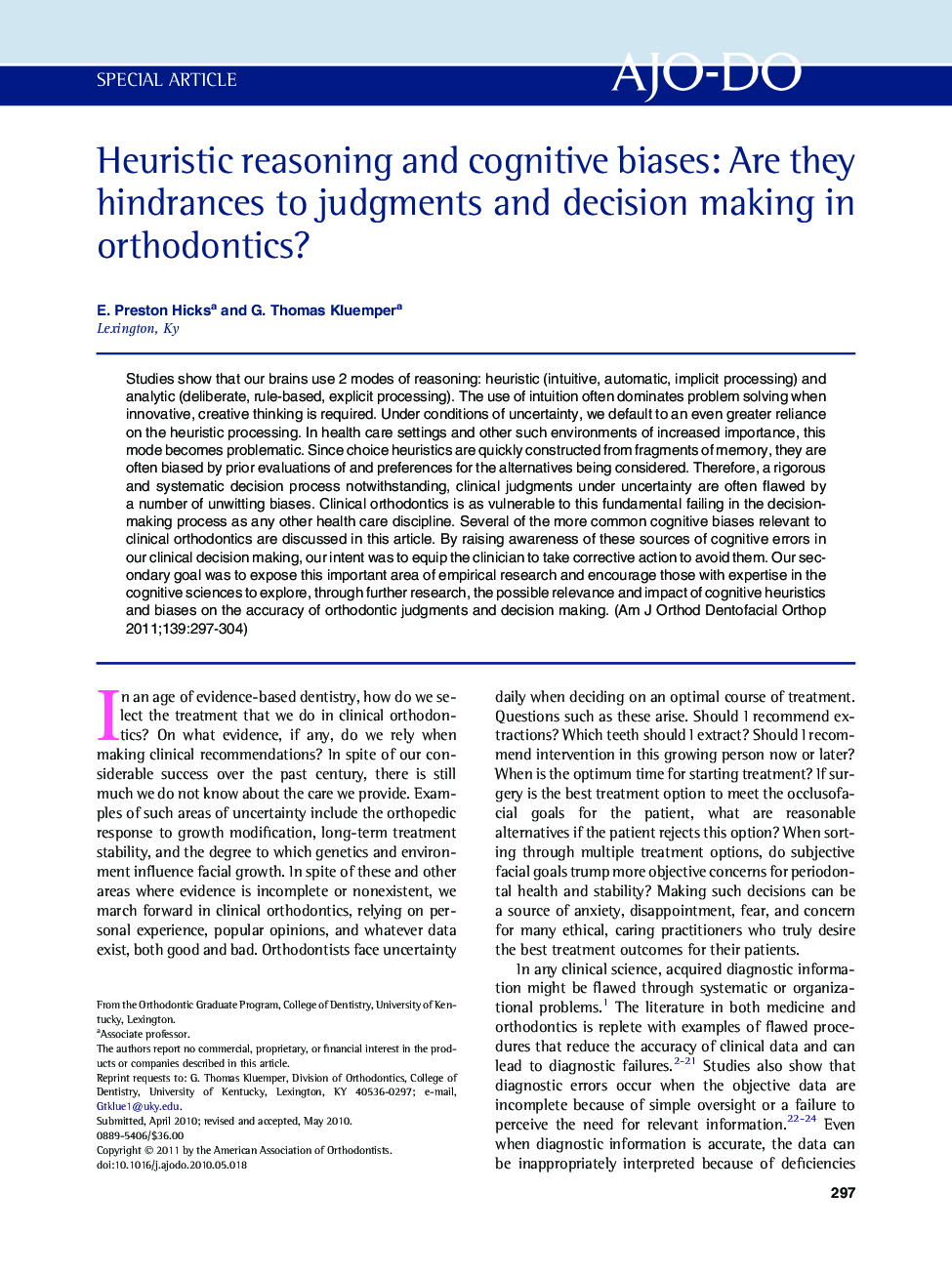| Article ID | Journal | Published Year | Pages | File Type |
|---|---|---|---|---|
| 3117119 | American Journal of Orthodontics and Dentofacial Orthopedics | 2011 | 8 Pages |
Studies show that our brains use 2 modes of reasoning: heuristic (intuitive, automatic, implicit processing) and analytic (deliberate, rule-based, explicit processing). The use of intuition often dominates problem solving when innovative, creative thinking is required. Under conditions of uncertainty, we default to an even greater reliance on the heuristic processing. In health care settings and other such environments of increased importance, this mode becomes problematic. Since choice heuristics are quickly constructed from fragments of memory, they are often biased by prior evaluations of and preferences for the alternatives being considered. Therefore, a rigorous and systematic decision process notwithstanding, clinical judgments under uncertainty are often flawed by a number of unwitting biases. Clinical orthodontics is as vulnerable to this fundamental failing in the decision-making process as any other health care discipline. Several of the more common cognitive biases relevant to clinical orthodontics are discussed in this article. By raising awareness of these sources of cognitive errors in our clinical decision making, our intent was to equip the clinician to take corrective action to avoid them. Our secondary goal was to expose this important area of empirical research and encourage those with expertise in the cognitive sciences to explore, through further research, the possible relevance and impact of cognitive heuristics and biases on the accuracy of orthodontic judgments and decision making.
